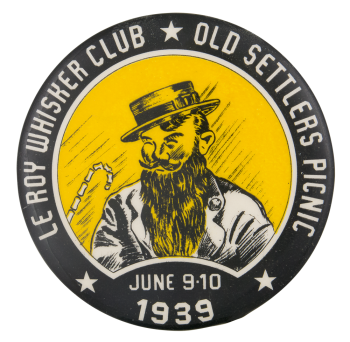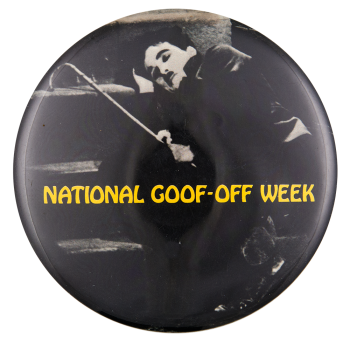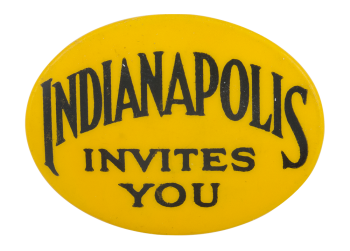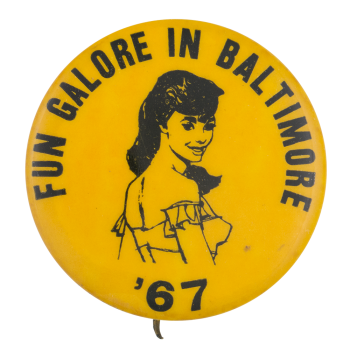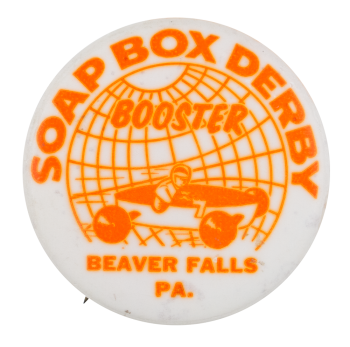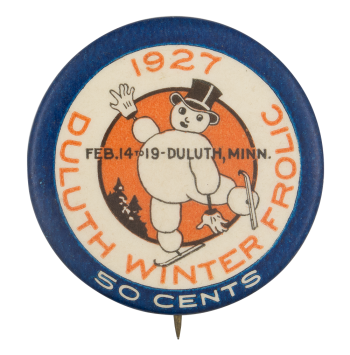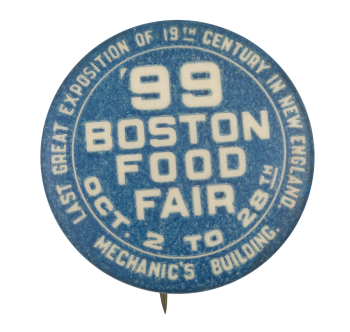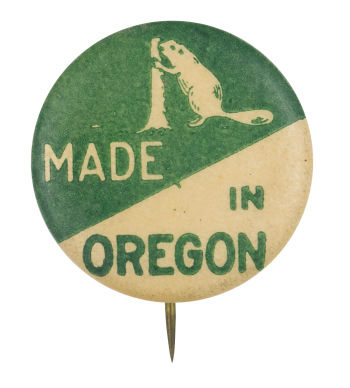Old Settlers Picnic
| Category | |
|---|---|
| Additional Images | |
| Sub Categories | |
| Text on Button | LE ROY WHISKER CLUB OLD SETTLERS PICNIC JUNE 9-10 1939 |
| Image Description | Illustration of man with a mustache and long beard wearing a sport coat and straw boater hat on a yellow background. White text on black border around edge of button. |
| Back Style | |
| The Shape | |
| The Size | |
| Year / Decade Made | |
| Additional Information | The 1939 Old Settlers Picnic was the 65th Annual picnic held in LeRoy, Minnesota. It was sponsored by the Le Roy Whisker Club. The picnic hosted a plethora of events such as: bands, parades, dances, merry-go-rounds, rides, movies and concessions. As the picnic was sponsored by the Le Roy Whisker Club it also featured a Whisker Contest. The picnic was an opportunity for some of the original Canadian families to settle in the area to meet and mingle with some of the newer families. |
| Sources |
Old Settlers Picnic at Le Roy Friday-Saturday. (1939, June 8). Lime Springs Herald. p.1. Retrieved from https://www.newspapers.com/newspage/36894939/. |
| Catalog ID | EV0347 |

